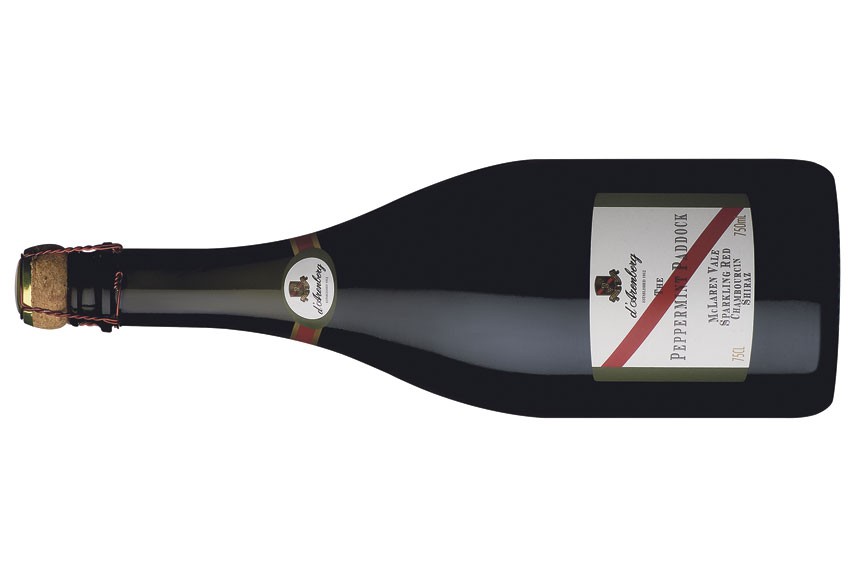Chambourcin in sparkling form

One of the most striking aspects of d’Arenberg’s operations – once you’ve got past the trademark red stripe label and Chester Osborne’s penchant for raucously patterned shirts – is the bewildering range of the grape varieties they cultivate.
And sure enough, the Peppermint Paddock, an assertive sparkling red that strolled into the Top 10 of last year’s The Adelaide Review Hot 100 South Australian Wines, isn’t made from any of the standard suspects of Shiraz, Cabernet or Merlot, but from an obscure French-American hybrid grape named Chambourcin. Obscure to most of us, perhaps, but back in the late 1980s when Osborne, the winery’s fourth generation vigneron and chief winemaker, was casting about for a replacement grape for a struggling Shiraz vineyard on a stony south-facing slope, he picked up on the possibilities of Chambourcin while browsing a copy of Practical Winery and Vineyard magazine. Reinforcement came from a chorus of his professional colleagues, among them Jim Irvine, Eden Valley’s Grand Old Man, who also provided some cuttings. As well as being a vigorous grower, Chambourcin boasts a much-touted resistance to disease that makes it especially welcome in humid wine regions like the Hunter Valley, but it was the prospect of novel flavours that endeared it to Osborne. Initially he made a still wine from his new vines, but while some of the early vintages were promising, he thought the grape’s tendency to naturally high levels of acid, even when fully ripe, made it an awkward proposition. D’Arenberg hadn’t put grapes into a sparkling red since Chester’s dad, d’Arry Osborne, turned over a barrel of Shiraz to Romalo’s Norm Walker in the early 1970s to see what would happen. Even though the result was excellent – the family scoffed much of it in the ensuing years – the proprietors prudently decided that their Shiraz was far too profitable as a table wine to put to more frivolous purposes. By the mid-1990s, though, the d’Arenberg Chambourcin was flourishing in its dry-grown vineyard and, with its full flavours, acid and tannins, seemed an ideal candidate to fill the spot as base wine for a new line of sparkling red. And so it proved; the wine has had a devout following ever since its first release. Co-fermentation with a tiny fraction of Viognier helps bring out the luxuriant colour, and the wine gets its very own shot of EPO in the form of a tirage of fortified vintage Shiraz, which adds a hint of sweetness and depth of flavour as well as fuelling the secondary fermentation to make the bubbles. Apart from the hue of the wine, it’s methode champenoise all the way. By d’Arenberg’s whimsical standards the wine has a very prosaic name, inspired by the peppermint gums that dot the organically managed vineyard. Peppermint Paddock is non-vintage, meaning that base wine from earlier vintages is blended in to keep the style consistent and complex. In the past, when the Chambourcin ran short, the volume has been supplemented with Laughing Magpie Shiraz Viognier. But to all intents and purposes, it’s the Chambourcin that has made the wine’s name. In the dismal 2011 growing season, Chambourcin lived up to its “hard man” reputation – without any applications of sulphur spray, the vines stared down the savage visitations of mildew and mould that dogged much of McLaren Vale. Osborne says that the much fancied 2012 vintage looks very promising right across the far-flung d’Arenberg range, but he won’t be drawn into any hyperbole until he has done another round of the vats in a few weeks’ time. When I mentioned to Osborne that wine sage James Halliday was on the record as taking a dim view of anyone making Australia’s classic sparkling red style with any grape except Shiraz, Chester just chuckled. As well he might.